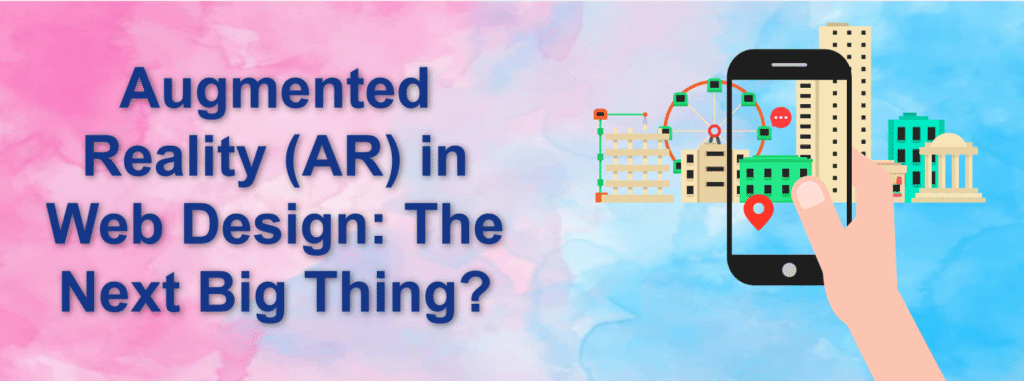Augmented Reality (AR) in Web Design: The Next Big Thing?

Augmented Reality (AR) in Web Design: The Next Big Thing?
Introduction
Web design is constantly evolving, incorporating new technologies to enhance user experience. One of the most exciting advancements in recent years is Augmented Reality (AR). By blending digital elements with the real world, AR is transforming how users interact with websites. But is AR the next big thing in web design? Let’s explore its impact, benefits, challenges, and future possibilities.
What is Augmented Reality in Web Design?
Augmented Reality (AR) enhances the real-world environment by overlaying digital elements through web browsers without requiring external applications. AR in web design allows users to interact with products, services, and experiences in an immersive way, making websites more engaging and interactive.
Unlike Virtual Reality (VR), which creates a completely artificial environment, AR enriches reality with computer-generated elements. This technology is now accessible directly through web browsers, thanks to WebAR—a technology enabling AR experiences on websites without requiring additional apps.
Benefits of AR in Web Design
1. Enhanced User Engagement
AR makes web experiences more interactive, capturing users’ attention and encouraging them to explore content more deeply.
2. Improved Conversion Rates
E-commerce websites benefit greatly from AR, as customers can visualize products in their environment before making a purchase, reducing return rates and boosting sales.
3. Personalized Experience
AR allows businesses to offer a customized experience by tailoring content based on user behavior and preferences.
4. Competitive Advantage
Integrating AR into web design helps brands stand out from competitors, offering innovative experiences that keep visitors engaged.
5. Reduced Bounce Rates
Engaging AR elements can keep users on a website for longer periods, decreasing bounce rates and improving search engine rankings.
Use Cases of AR in Web Design
1. E-commerce and Retail
AR enables online shoppers to try on clothes, accessories, or furniture in their own space before purchasing. Brands like IKEA and Sephora use AR to enhance shopping experiences.
2. Real Estate and Architecture
Real estate websites use AR to offer virtual property tours, allowing potential buyers to visualize properties in 3D without visiting them physically.
3. Education and Training
AR enhances educational websites by providing interactive learning experiences, such as virtual dissections in biology or historical site reconstructions.
4. Healthcare and Telemedicine
AR is transforming the healthcare industry by enabling interactive 3D demonstrations for patient education and surgical training.
5. Travel and Tourism
Travel websites use AR to offer virtual tours of destinations, museums, and hotels, helping users make informed decisions before booking.
Challenges of Implementing AR in Web Design
1. Technical Limitations
AR requires high-quality 3D rendering and fast internet speeds, which may not be accessible to all users.
2. Device Compatibility
Not all devices and browsers support WebAR, limiting accessibility for some users.
3. Development Costs
Integrating AR into web design requires expertise and investment in development, which may not be feasible for small businesses.
4. Privacy and Security Concerns
AR applications collect user data, raising privacy concerns. Ensuring compliance with data protection laws is crucial.
Future of AR in Web Design
As technology advances, AR in web design will become more accessible and affordable. The development of 5G networks, AI integration, and improved browser support will enhance AR experiences. Businesses that adopt AR early will gain a competitive edge by offering immersive and engaging digital experiences.
Conclusion
Augmented Reality (AR) is transforming web design, offering interactive and immersive experiences that enhance user engagement. While challenges exist, the benefits of AR in web design outweigh its limitations. As the technology continues to evolve, AR is set to become a standard feature in modern web development. Businesses looking to stay ahead should consider integrating AR into their websites to offer unique and engaging user experiences.
SUEFUL LINKS:
https://awaraj.com/ar-vr-development-services/
https://awaraj.com/immersive-experience-design/
https://awaraj.com/interactive-3d-web-solutions/
https://awaraj.com/virtual-reality-integration/
https://awaraj.com/creative-technology-solutions/

